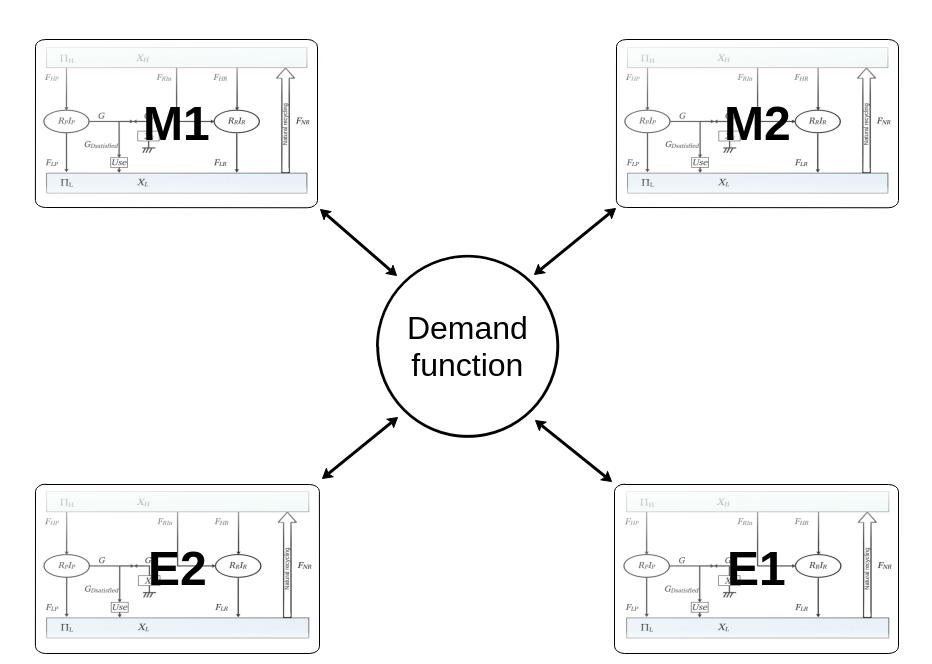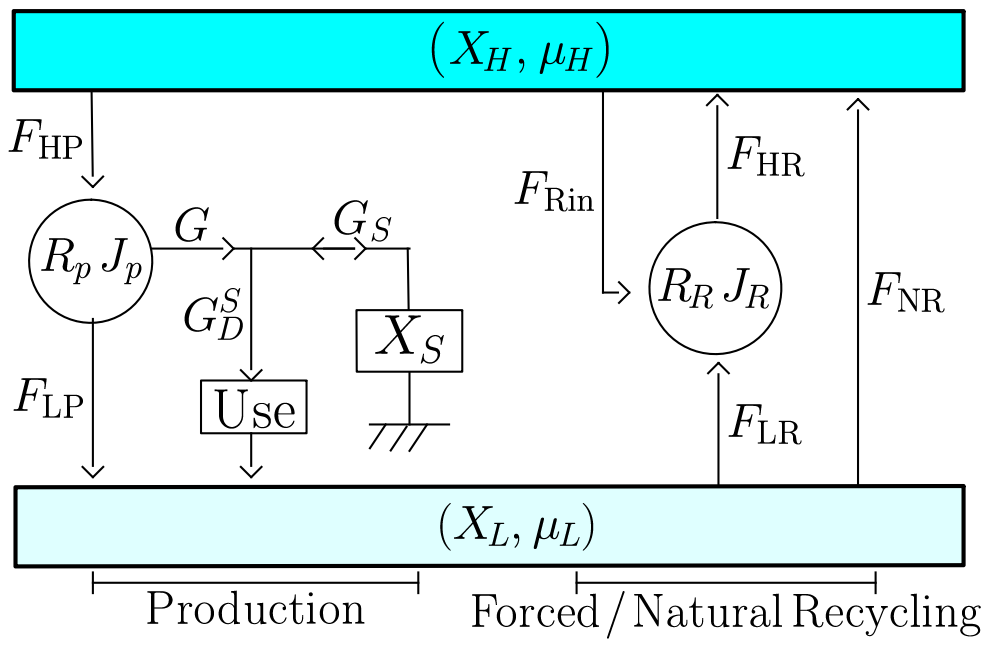New Publication
06 Nov 2023Macroeconomic dynamics in a finite world based on thermodynamic potential
LIED — Université Paris Cité, 35 rue H. Brion, 75013 Paris
Author Eric Herbert , Gael Giraud, Aurélie Louis Napoléon and Christophe Goupil
contacts: eric.herbert@u-paris.fr , christophe.goupil@u-paris.fr , ————————————————————————
  |
|---|
| Top, physical sheets with four sectors interconnected by a central kernel. |
| Bottom, global structure of a sheet of resource. Left part is the production area, middle part is forced recycling, and right part is natural recycling. |
In this work we are interested in the connection between economic spheres and physical resources. Rather than integrating thermodynamic formalism into economic modeling, we create a generic tool for describing the use of a resource as a function of its availability (the volume of its stock) and the intensity of its use, based on the concepts of quantity and quality.
Abstract of the paper
This paper presents a conceptual model describing the medium and long term co-evolution of natural and socio-economic subsystems of Earth. An economy is viewed as an out-of-equilibrium dissipative structure that can only be maintained with a flow of energy and matter. The distinctive approach emphasized here consists in capturing the economic impact of natural ecosystems’ depletion by human activities via a pinch of thermodynamic potentials. This viewpoint allows: (i) the full-blown integration of a limited quantity of primary resources into a non-linear macrodynamics that is stock-flow consistent both in terms of matter-energy and economic transactions; (ii) the inclusion of natural and forced recycling; (iii) the inclusion of a friction term which reflects the impossibility to produce (and recycle)goods and services without exuding energy and matter wastes, and (iv) the computation of the anthropically produced entropy as a function of metabolizing intensity and frictions. Analysis and numerical computations confirm the role played by intensity and frictions as key factors for sustainability by contrast with real gdp growth—as well as the interplay between resource scarcity, income inequality, and inflation. A more egalitarian society with moderate inflation turns out to be more sustainable than an unequal society with low inflation. Our approach is flexible enough to allow for various economic models to be embedded into our thermodynamic framework. Finally, we propose the open source EcoDyco software as a first complete realization implementing economic dynamics in a multi-resource environment.
To know more about it, see
Herbert, É., Giraud, G., Louis-Napoléon, A., & Goupil, C. (2023). Macroeconomic dynamics in a finite world based on thermodynamic potential. Sci. Rep., 13(18020), 1–27. doi

